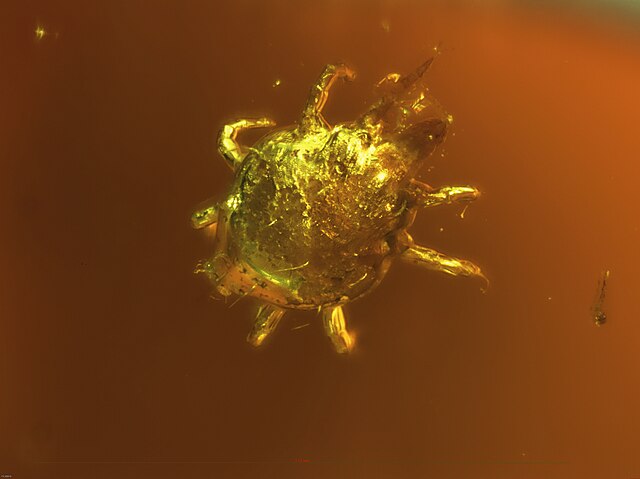Parasitengona is a group of mites, variously ranked as a hyporder or a cohort, between the taxonomic ranks of order and family.
Parasitengona
Allothrombium (Trombidiidae: Trombidioidea)
Water mite (Hydrachnidia)
Erythraeidae (Erythraeoidea) larva attached to Opiliones leg
Mites are small arachnids. Mites span two large orders of arachnids, the Acariformes and the Parasitiformes, which were historically grouped together in the subclass Acari. However, most recent genetic analyses do not recover the two as each other's closest relative within Arachnida, rendering the group non-monophyletic. Most mites are tiny, less than 1 mm (0.04 in) in length, and have a simple, unsegmented body plan. The small size of most species makes them easily overlooked; some species live in water, many live in soil as decomposers, others live on plants, sometimes creating galls, while others are predators or parasites. This last type includes the commercially destructive Varroa parasite of honey bees, as well as scabies mites of humans. Most species are harmless to humans, but a few are associated with allergies or may transmit diseases.
Image: Trombidium holosericeum (aka)
Image: Varroa destructor, 1 2019 09 06 19.12.07 ZS P Max UDR (48697155713)
The microscopic mite Lorryia formosa (Tydeidae)
Mite, cf Glaesacarus rhombeus, fossilised in Baltic amber, Upper Eocene








